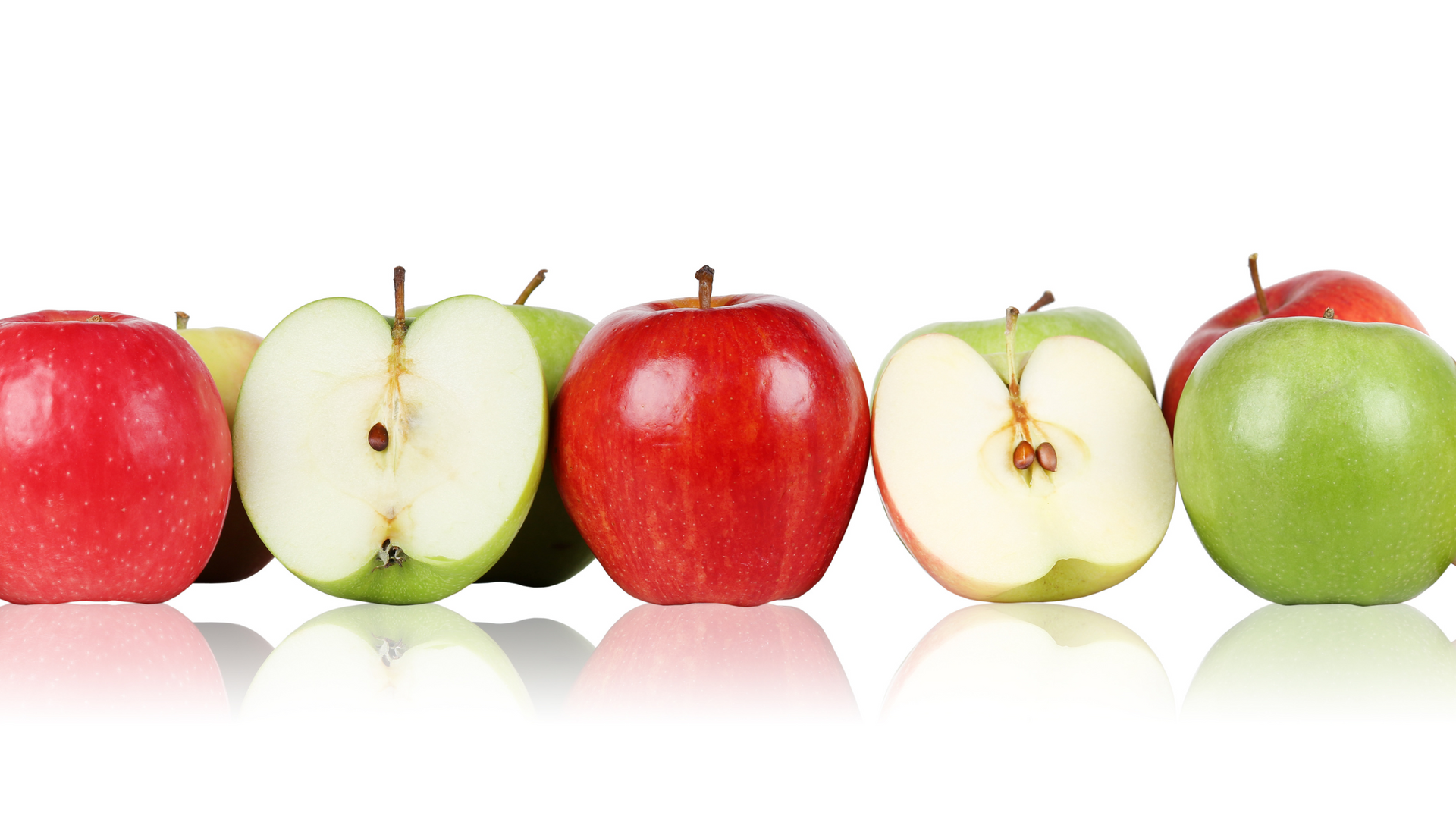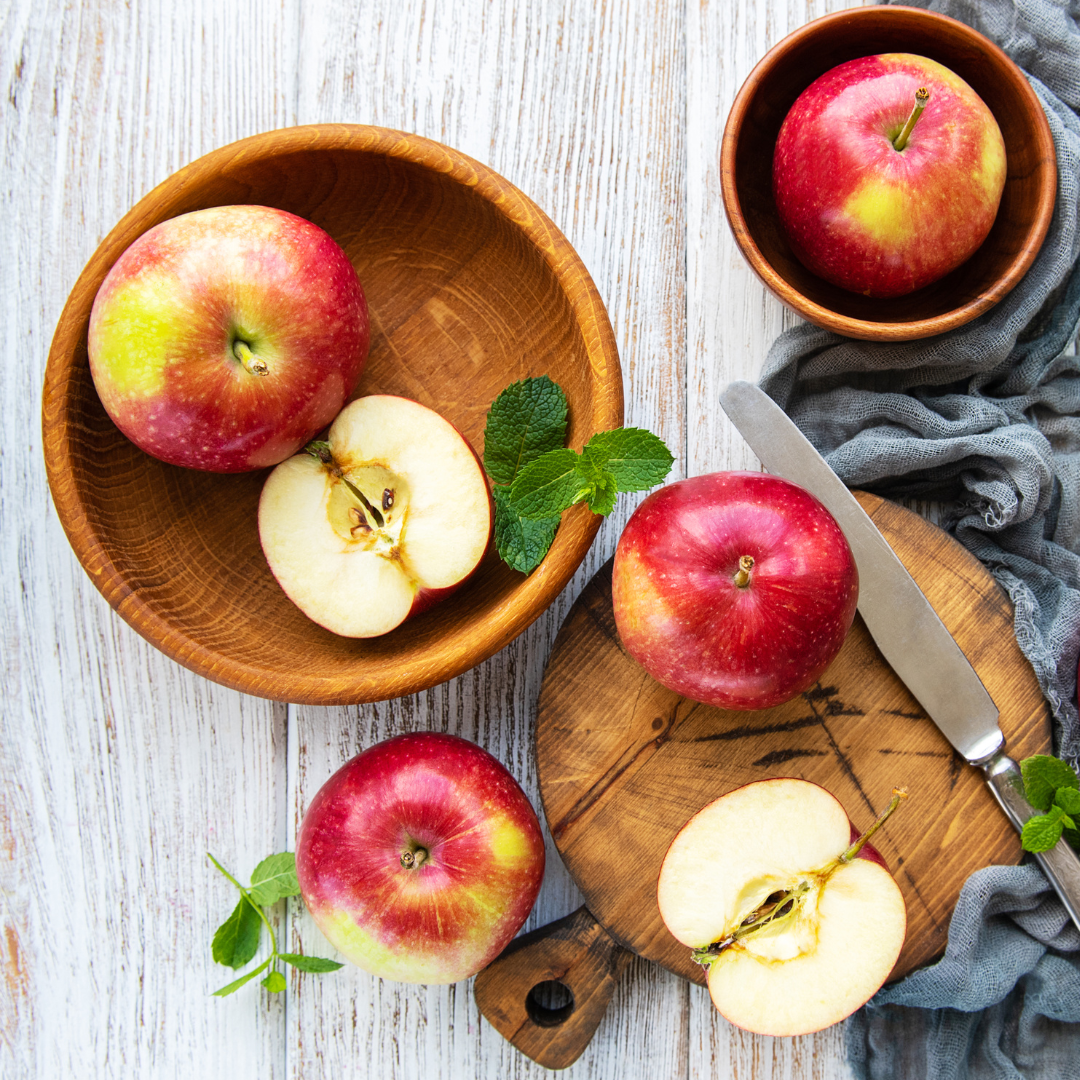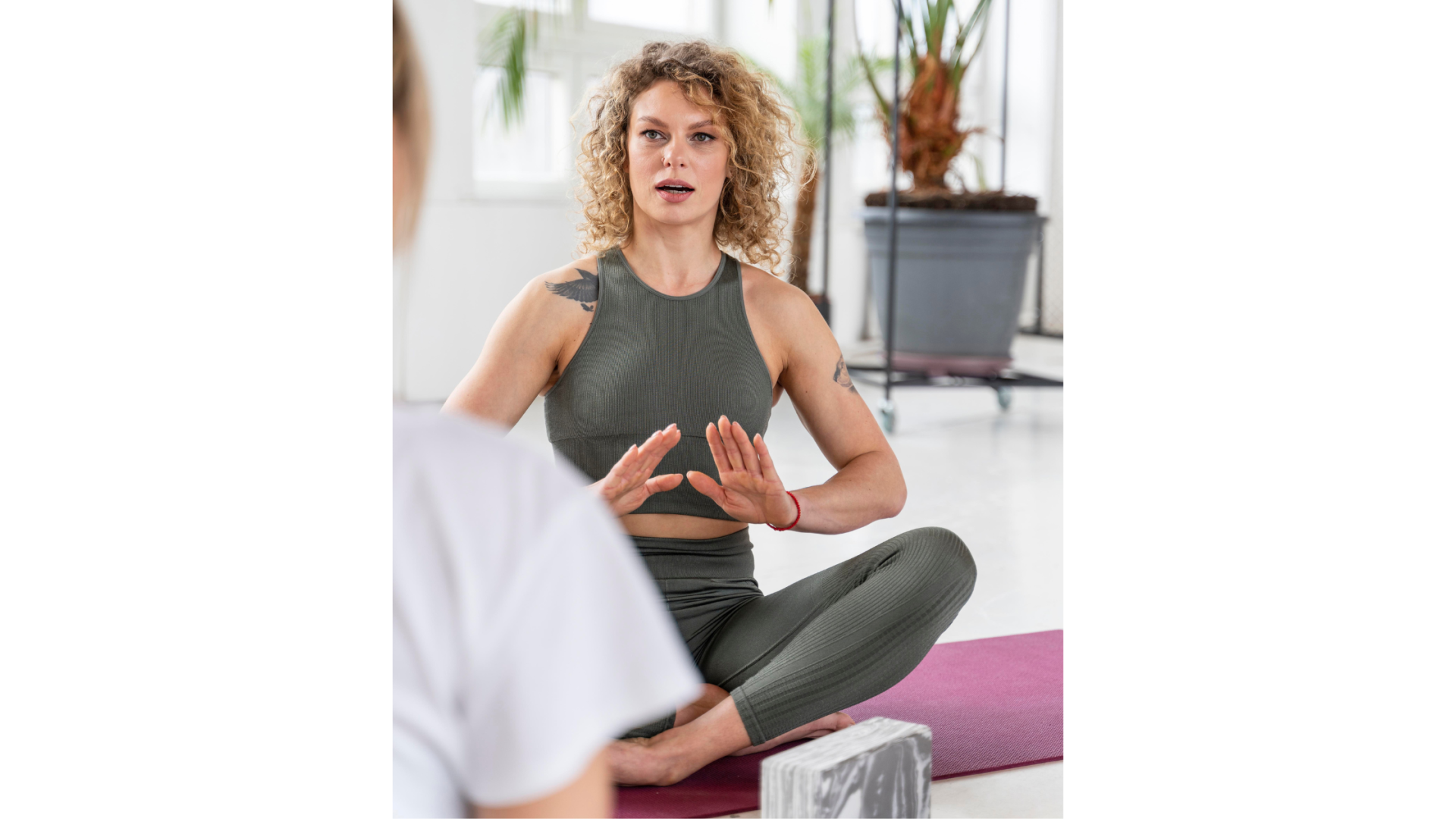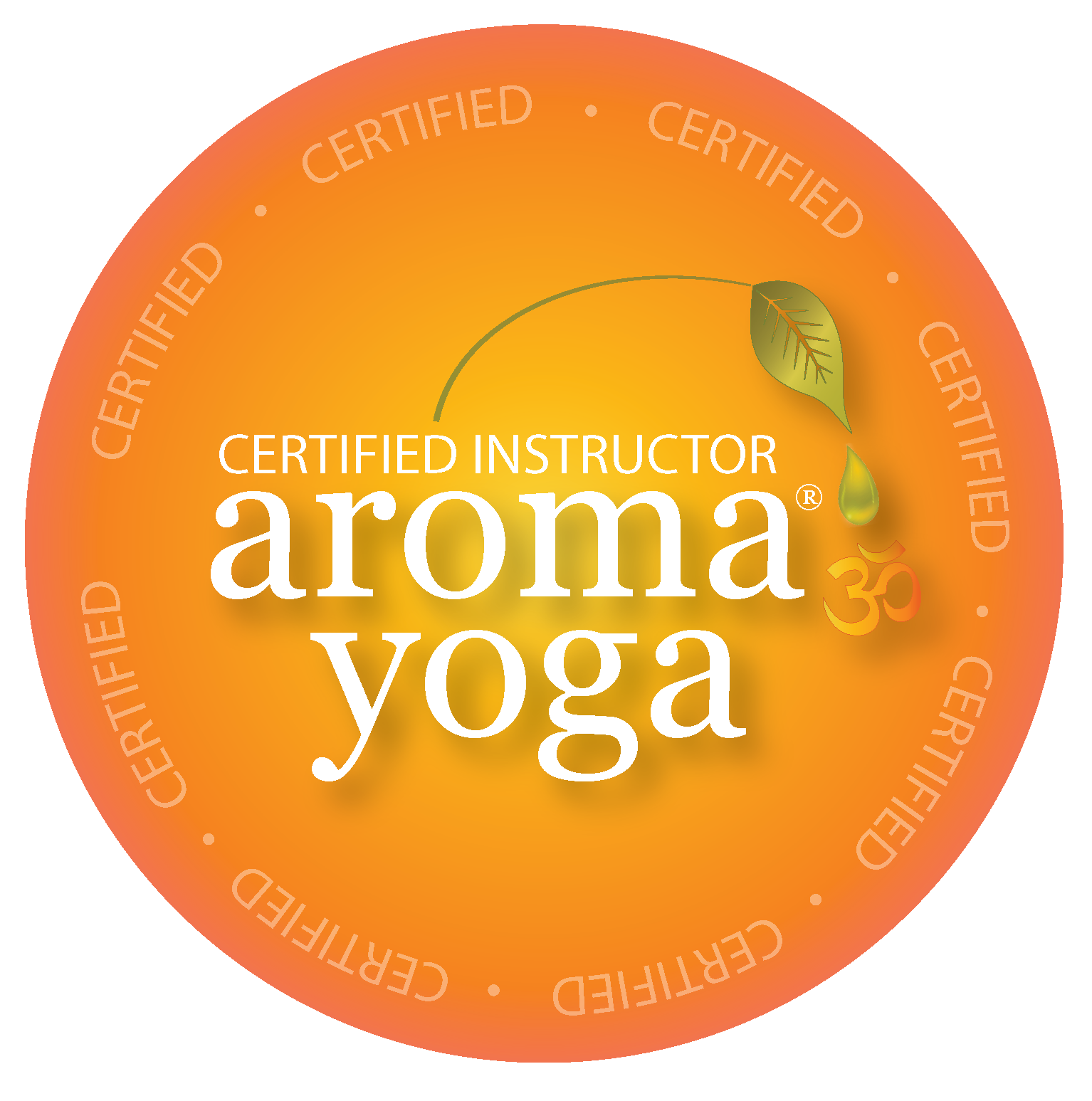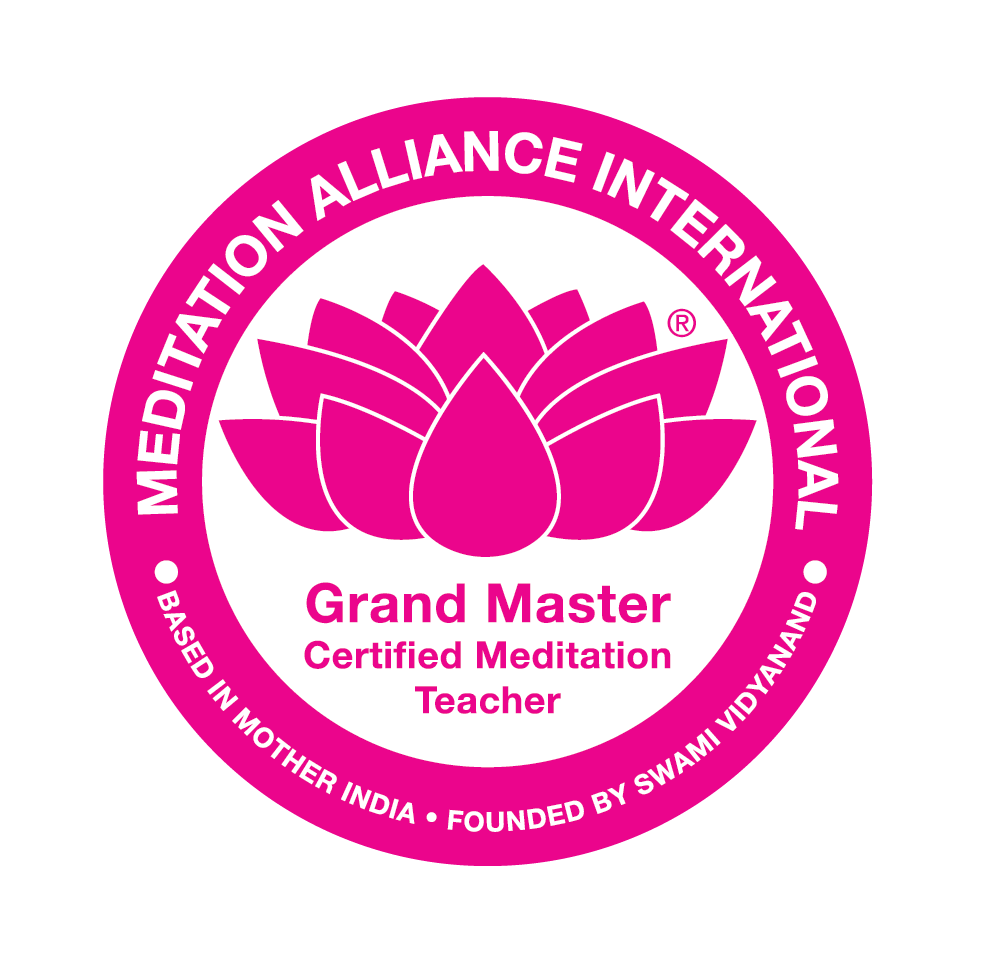Cooked or Uncooked? Red or Green? What Ayurveda Tells Us About Apples.
According to Ayurveda, the ancient Indian system of medicine, the properties and effects of foods are often categorised based on their taste (rasa), energy (virya), and post-digestive effect (vipaka).
Both green and red apples are considered beneficial in Ayurveda, but they have slightly different qualities:
- Green Apples: Green apples are generally considered to have a more cooling energy (virya) and astringent taste (rasa). They are thought to pacify Pitta dosha (the Ayurvedic mind-body type associated with fire and water elements) and can help balance excess heat in the body. Green apples are also believed to promote digestion and have a detoxifying effect.
- Red Apples: Red apples are considered to have a warmer energy (virya) and a sweet and slightly sour taste (rasa). They are believed to have a nourishing effect and can help balance Vata dosha (the Ayurvedic mind-body type associated with air and space elements). Red apples are also considered to promote vitality, strengthen the heart, and provide nourishment to the body.
Ultimately, the choice between green and red apples depends on your individual constitution (dosha) and any specific health conditions you may have. It's always a good idea to consult with an Ayurvedic practitioner or healthcare professional to determine which type of apple is best suited to your needs.
But what does Ayurveda say about eating apples cooked or uncooked?
According to Ayurveda, the effects of food should also be looked at according to its impact on the three doshas (Vata, Pitta, and Kapha).
When it comes to apples, Ayurveda suggests that cooked apples are generally considered better than raw apples due to the following reasons:
- Digestion: Ayurveda considers cooked apples to be easier to digest compared to raw apples. Cooking the apple breaks down its cellular structure, making it softer and more readily digestible. Raw apples, on the other hand, can be harder to digest, especially for individuals with weak digestive fire (agni) or imbalanced Vata dosha.
- Vata Balancing: Ayurveda recognizes Vata dosha as being cold, dry, and light in nature. Raw apples also possess these qualities, which can potentially aggravate Vata dosha in some individuals. Cooking the apple, however, adds warmth and moisture to the fruit, which helps balance Vata dosha.
- Enhancing Nutritional Availability: Cooking apples can increase the bioavailability of certain nutrients. Heat softens the apple, making its nutrients more accessible and easier to absorb during digestion. This can be particularly beneficial for individuals with weak digestion or those with compromised nutrient absorption.
- Calming Pitta Dosha: Pitta dosha, characterized by fire and heat, can become imbalanced in some individuals. Raw apples have a slightly acidic nature, which may aggravate Pitta dosha in sensitive individuals. Cooking apples can help reduce the acidic nature and provide a cooling effect, thus pacifying Pitta dosha.
- Soothing for Imbalanced Agni: Ayurveda considers cooked apples as being more soothing for an imbalanced digestive fire (agni). The heat generated during cooking partially breaks down the apple's fibres, making it easier to break down and assimilate. This can be beneficial for individuals with weak or compromised agni.
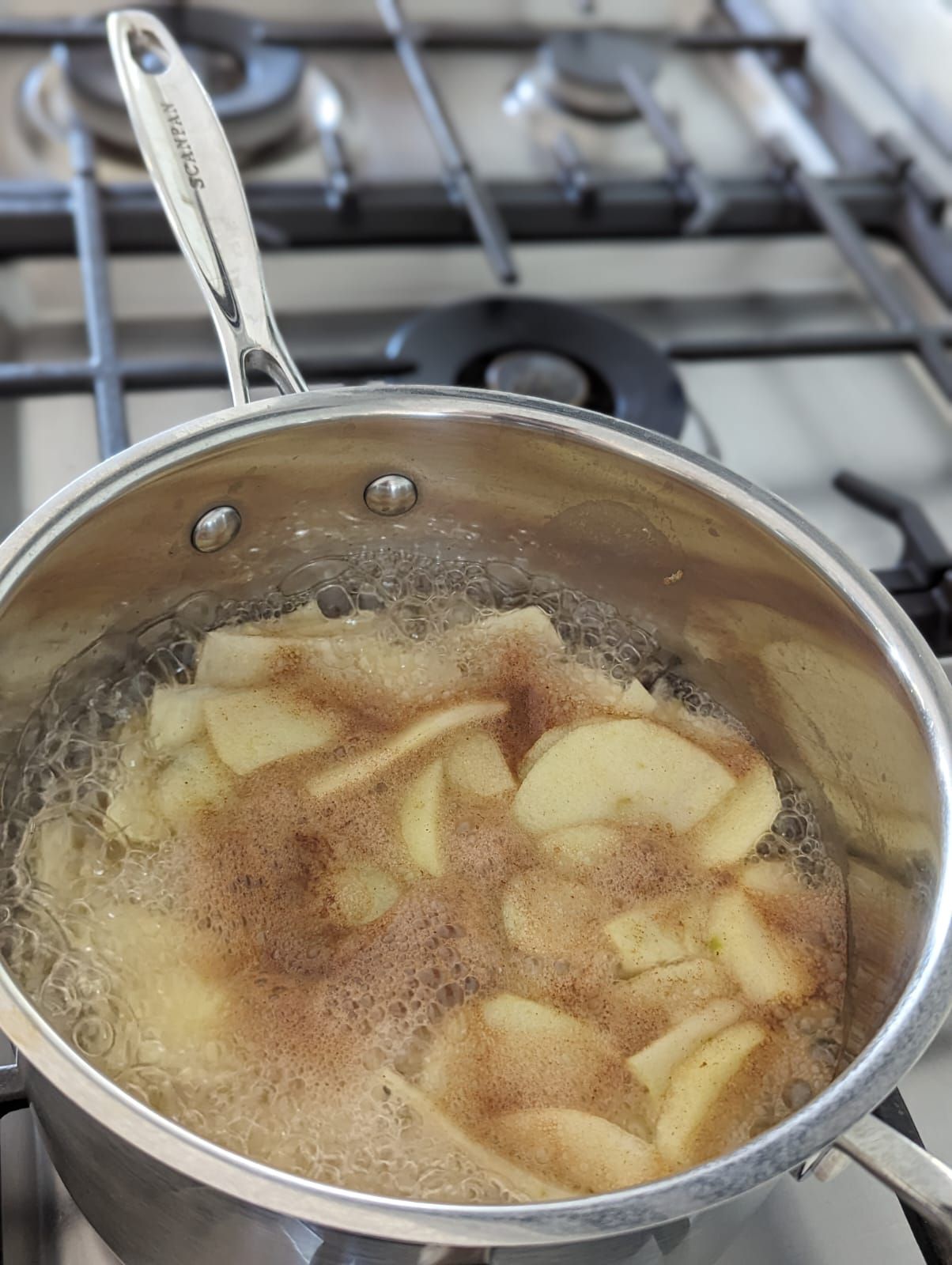
However, it's important to note that Ayurveda also recognizes the value of raw foods in providing certain qualities, such as freshness, vital energy (prana), and enzymes. Ayurvedic recommendations are highly individualized, considering factors such as one's constitution (prakriti), current imbalances (vikriti), and specific health conditions.

I personally prefer green apples. I find the digestive properties of cooked apples very pacifying, especially when I eat them warm. I also love adding cloves and cinnamon when I cook my apples, and sometimes a little jaggery for taste as well.
It is of course a personal choice, but sometimes just knowing there are certain benefits and reasons for eating foods a certain way can help inform the choices we make.
I'd love to know how you best like to eat your apples, and whether you are a red or green apple lover!


Join our mailing list for news and updates.

